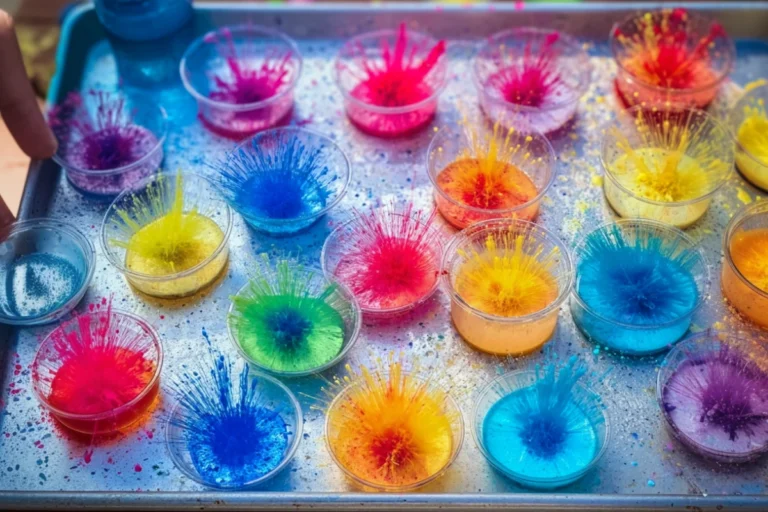Introduction to DIY Fireworks
Ever dreamed of having a fireworks show right in your kitchen or backyard without the danger, noise, or late-night noise complaints? Welcome to the magical world of baking soda and vinegar fireworks—a bubbly, foamy, and colorful chemical reaction that delights kids and adults alike!
This is more than just a fizzy show—it’s a hands-on science lesson and a DIY party trick rolled into one. You don’t need any fancy equipment or a science degree. Just a few household ingredients and a sense of curiosity!
You only need a few key supplies to create these colorful, fizzy “fireworks” at home. Grab the basics below and let the experiment begin!
Must-Have Materials (Shop Now):
[amazon_auto_links id=”2723″]
-
Baking soda – base of the fizzy reaction – shop now
-
White distilled vinegar – the bubbling acid – get it here
-
Food coloring – brings the firework colors to life – shop now
-
Clear plastic cups or muffin tin – great for holding fizz – buy now
-
Pipette or spoon – for controlled vinegar pouring – get it here
-
Tray or pan – catches overflow and keeps it tidy – shop now
Why Choose Baking Soda and Vinegar?
[amazon_auto_links id=”2723″]
Because it’s:
-
Safe
-
Inexpensive
-
Super exciting
-
Easy to clean up
Plus, the results are almost instant—no waiting around like with other experiments.
Who Can Try This? Age Recommendations
[amazon_auto_links id=”2723″]
This experiment is great for:
-
Toddlers (with help)
-
Preschoolers and elementary-aged kids
-
Teen science lovers
-
Adults who want to feel like a kid again
Basically—anyone with a spark for curiosity!
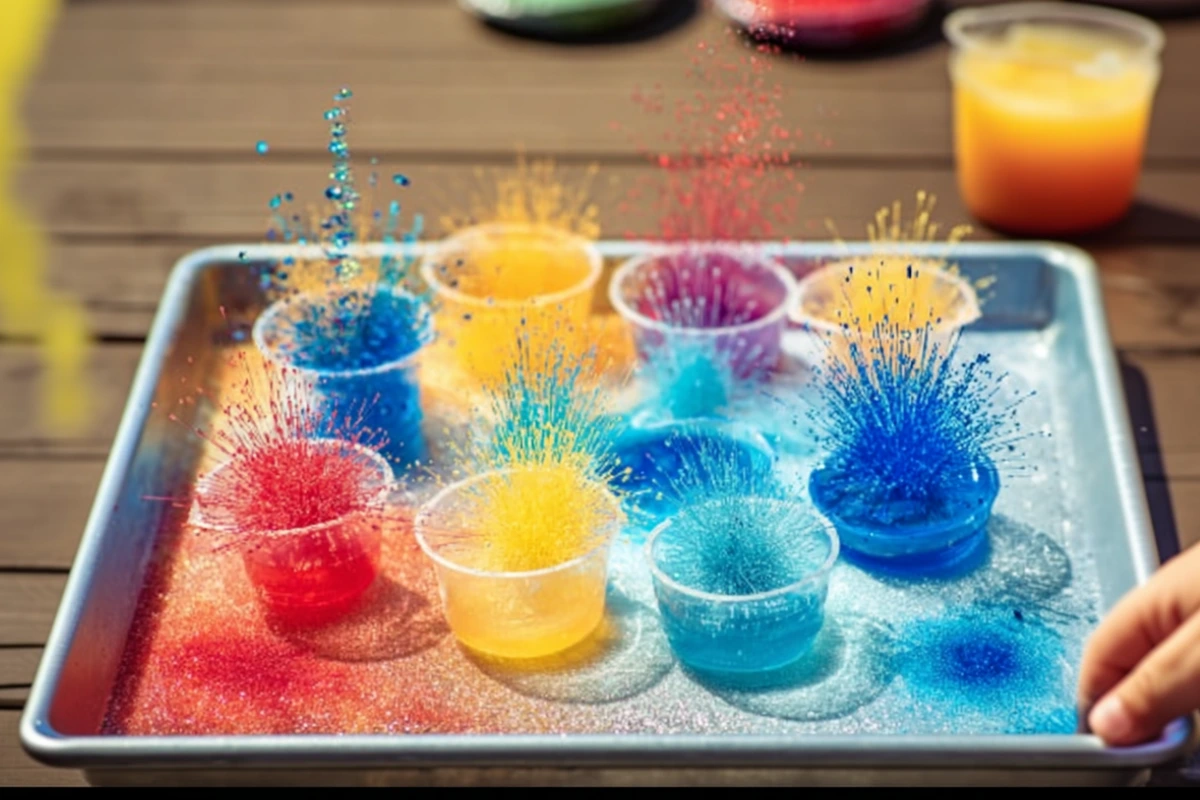
Materials You’ll Need
[amazon_auto_links id=”2723″]
Let’s gather your “firework” supplies:
Basic Supplies
-
Clear plastic cups or muffin tin
-
Baking soda (sodium bicarbonate)
-
White distilled vinegar
-
Food coloring (red, blue, yellow, green, etc.)
-
Pipette, spoon, or small cup
-
Tray or pan (to catch spills)
Optional Fun Add-ons
-
Dish soap
-
Glitter (if you dare)
-
Black construction paper
-
Colored vinegar ice cubes
Step-by-Step Instructions
Ready? Let’s light up your science sky.
Step 1: Prep Your Science Lab
Lay down a tray or old towel. Set up your cups or muffin tin—this keeps everything in place.
Step 2: Add Your Firework Base
Spoon about 1 tablespoon of baking soda into each section.
Step 3: Splash in the Colors
Add 2–3 drops of different food coloring into each compartment.
Step 4: Let It FIZZ!
Use a pipette or pour vinegar slowly over the baking soda. Sit back and watch the colorful fizz burst to life.
Step 5: Experiment and Repeat
Try more vinegar. Mix colors. Add more soda. Change up the container shapes. See what works best!
Understanding the Science
[amazon_auto_links id=”2723″]
Let’s break it down for the curious minds.
What’s Happening Here?
It’s all chemistry, baby. Baking soda is a base, and vinegar is an acid.
Acid + Base = Explosion of Bubbles
This creates carbon dioxide (CO₂)—a gas that escapes as those fun bubbles.
The Foam Effect
Dish soap traps the gas longer, making huge, foamy fizzers.
Color + Reaction = Visual Fireworks
The color doesn’t affect the science, but it sure makes it magical.
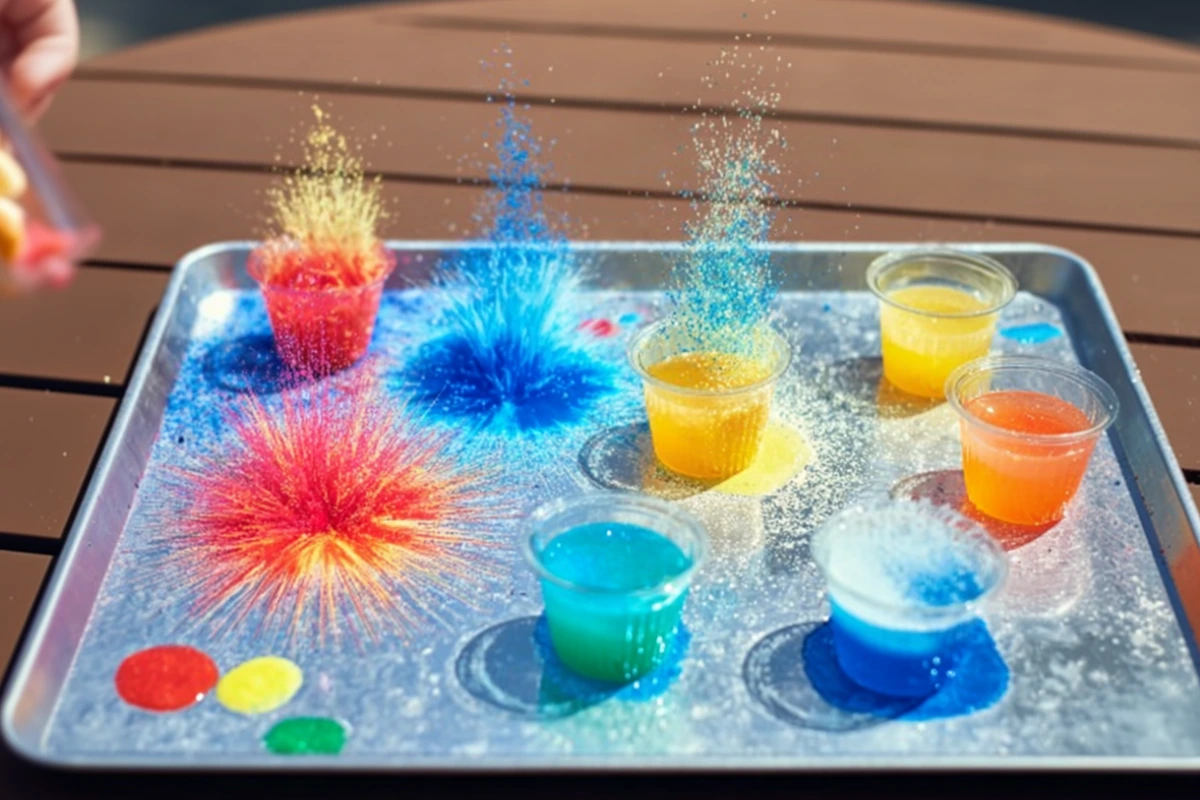
Creative Ways to Elevate the Experiment
[amazon_auto_links id=”2723″]
Ice Cube Edition
Freeze vinegar with food coloring in an ice tray. Drop the cubes onto baking soda for a slow-release effect.
Foam it Up
Add a squirt of dish soap into each cup before adding vinegar for thick, long-lasting foam.
Night Sky Illusion
Lay black construction paper underneath to make the fizz pop like real fireworks at night.
Engage the Senses
Let kids touch the foam, smell the vinegar, and describe what they see—it’s a full-body experience!
Safety First
Kid-Friendly Experimenting Tips
-
Always supervise young children
-
Avoid touching eyes after using vinegar
-
Use a tray to avoid staining surfaces
Easy Clean-Up
Just rinse with warm water—no harsh cleaners needed.
Educational Benefits for Kids
This isn’t just fun—it’s full of learning!
Learn Chemistry Naturally
They see acids and bases reacting right in front of them.
Boost Creativity
Let kids create their own color combos or fizz “art.”
Improve Motor Skills
Scooping, pouring, and squeezing help fine motor development.
Hosting a Science Party?
[amazon_auto_links id=”2723″]
Turn your fizz show into an unforgettable celebration!
Create Firework Stations
Each child gets a tray with their own ingredients.
Keep It Moving
Have a few stations with different variations (ice cube zone, dish soap area, etc.)
Give Science Party Favors
Mini baking soda and vinegar kits for guests to take home.
Themed Science Fun
Make it festive by matching the fizz to your holiday!
4th of July Fireworks
Use red, white, and blue colors. Add glitter (optional).
Spooky Halloween Fizz
Use orange and black dyes, and plastic spiders.
Snowy Science
White vinegar and blue coloring = winter wonderland fizz.
Rainbow Day
Every color, every cup, every fizz. Go full-spectrum!
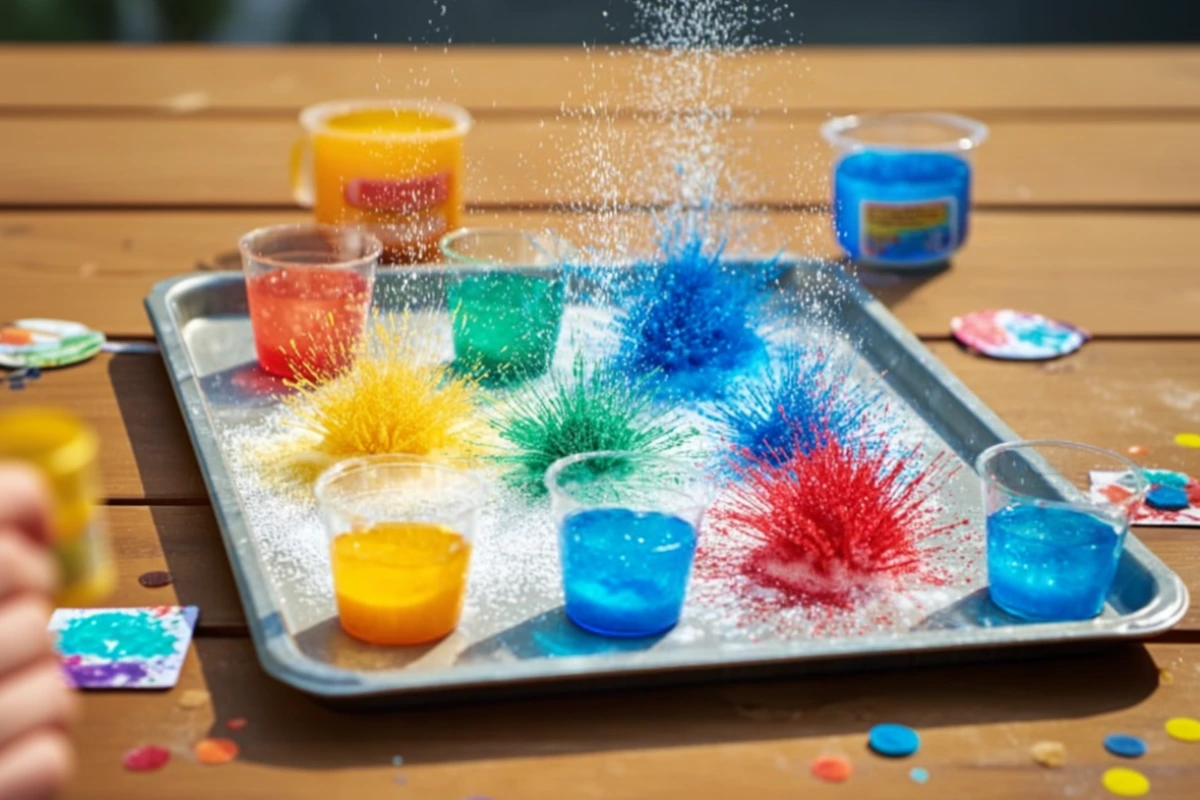
Tips and Tricks for Best Results
Avoid Overflow Mess
Use a tray or do it outside.
Baking Soda to Vinegar Ratio
Start with 1 tbsp of soda + 2 tbsp of vinegar.
Make It Last
Use ice vinegar cubes to prolong the reaction.
Documenting the Experiment
[amazon_auto_links id=”2723″]
Start a Science Journal
Have kids draw what they saw before and after.
Record a Video
Slow-mo fizzing is Instagram-worthy.
Create Art
Let the colors drip and dry—frame it as “firework art.”
Conclusion
Baking soda and vinegar fireworks are more than just a colorful explosion—they’re a gateway into curiosity, learning, and pure joy. Whether you’re looking for a weekend science activity, a party idea, or a sneaky way to teach chemistry, this fizzy fun has it all.
It’s messy (in a good way), exciting, easy, and unforgettable. So grab your baking soda, pour some vinegar, and let the backyard science show begin!
FAQs
Q1: Can I reuse the baking soda after one fizz?
Nope! Once the chemical reaction happens, it’s spent. You’ll need fresh baking soda for each round.
Q2: What happens if I use apple cider vinegar instead of white vinegar?
It still works but might smell stronger and appear darker in color.
Q3: Is this experiment safe indoors?
Yes, just use a tray or old towel to catch spills. It’s kitchen-friendly!
Q4: Can I do this with a group of toddlers?
Absolutely—but always supervise. Pre-fill everything to keep it easy and safe.
Q5: How can I turn this into a full science lesson?
Ask questions, make predictions, and write/draw what you observe. Even simple comparisons can become valuable learning moments.
[amazon_auto_links id=”2723″]
Print
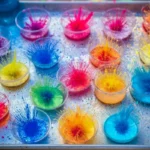
Baking Soda and Vinegar Fireworks
- Total Time: 5 minutes
- Yield: 1 science experiment setup (multiple uses) 1x
Description
A fun and fizzy baking soda and vinegar fireworks experiment that’s perfect for kids to explore science safely and colorfully.
Ingredients
1 tbsp baking soda per cup
2–3 drops food coloring per cup
2 tbsp vinegar per cup (adjust as needed)
Optional: dish soap, glitter, ice cubes, black paper
Instructions
Set up cups with baking soda and food coloring. Slowly add vinegar to watch the fizzy reaction. Repeat with variations for more fun.
Notes
Try freezing colored vinegar into ice cubes or adding dish soap for extra foam. Great for parties, learning, and sensory play.
- Prep Time: 5 minutes
- Cook Time: 0 minutes
- Category: DIY Science Experiment
- Method: Chemical Reaction
- Cuisine: N/A
Nutrition
- Serving Size: 1 setup
- Calories: N/A
- Sugar: N/A
- Sodium: N/A
- Fat: N/A
- Saturated Fat: N/A
- Unsaturated Fat: N/A
- Trans Fat: N/A
- Carbohydrates: N/A
- Fiber: N/A
- Protein: N/A
- Cholesterol: N/A
Keywords: baking soda and vinegar fireworks, fizzy science experiment, kids chemistry activity, safe science for kids, colorful vinegar reaction
